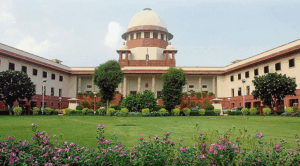GS1 – Indian Society

Context
India’s secular identity is deeply rooted in its linguistic and religious plurality. However, recent language-based violence, such as attacks on non-Marathi speakers in Maharashtra, undermines this inclusive ethos.
With 121 languages and 270 mother tongues (Census 2011), maintaining linguistic pluralism is crucial to safeguarding India’s idea of unity in diversity.
Understanding Secularism in the Indian Context
- Inclusive Secularism: Unlike the Western notion of complete separation between state and religion, Indian secularism promotes equal respect and recognition for all religions and communities (Sarva Dharma Sambhava).
- Constitutional Provisions: Articles 25 to 28 safeguard the freedom of conscience and religion. Importantly, Indian secularism treats language as a vital element of identity alongside religion.
- State’s Neutral Role: The Indian state does not endorse or suppress any particular language or religion. It also has the authority to act against both religious and linguistic communalism.
Why India Has No National Language
- Constitutional Clarity: India has no designated national language. Article 343 specifies Hindi in Devanagari script as the official language of the Union, not the national language.
- Linguistic Federalism: Indian states have the autonomy to select their own official languages, reflecting regional cultural identity and reinforcing linguistic federalism.
- Linguistic Rights: Under Article 29, all citizens, especially minorities, are entitled to preserve their distinct language, script, and culture. The Constitution also prohibits discrimination based on language, thus upholding pluralism.
- Eighth Schedule Recognition: It currently includes 22 languages, representing 96.71% of the population’s mother tongues. However, 99 languages remain outside this schedule, highlighting India’s immense linguistic diversity.
Current Challenges to Linguistic Secularism
- Rise of Identity Politics: Violence targeting non-Marathi speakers in Maharashtra exemplifies growing language-based identity politics under the guise of cultural protection.
- Resistance to Language Imposition: States such as Tamil Nadu and those in the Northeast have historically opposed the imposition of Hindi, advocating for local linguistic autonomy.
- Threat to Federal Inclusiveness: The politicization of language for exclusionary purposes distorts cultural pride and weakens India’s pluralistic federal structure.
Way Forward
- Policy Measures: Promote multilingual education and encourage the use of diverse languages in administration, education, and media.
- Political Maturity: Leaders must avoid divisive language narratives and support policies that foster linguistic harmony instead of promoting majoritarian interests.
- Civic Participation: Citizens should uphold respect for all languages through daily interactions, inclusive education, and public discourse.
- Institutional Strengthening: Enhance the role of the Commissioner for Linguistic Minorities and enforce constitutional safeguards under Articles 29 and 30.




